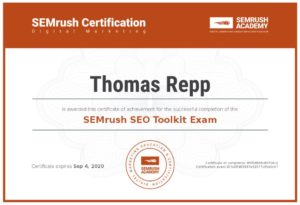 Based on “The New SEO Playbook: How AI is reshaping search & content” presented by Search Engine Journal, Siteimprove & IDC on 7/23/2025
Based on “The New SEO Playbook: How AI is reshaping search & content” presented by Search Engine Journal, Siteimprove & IDC on 7/23/2025
In an era where every click counts and the AI revolution is in overdrive, mid-size B2B industrials can’t afford to be stuck in yesterday’s SEO playbook. Generative AI search engines surged 1500% in volume after July 2024, already accounting for 10–25% of branded website traffic—proof that the game has fundamentally changed. Yet, many industrial marketers are still clinging to keyword-stuffing and static homepages. It’s time to evolve or get left behind.
1. Why the Old Funnel Is Fractured—and What You Do About It
Traditional SEO funnels are like assembly lines built in the analog age. Users don’t meander through your homepage; they leapfrog straight to the deep end—product specs, buyer guides, or conversion pages. Generative AI has no patience for surface-level content; it routes high-intent prospects directly to the goods.
Actionable Insight: Prioritize the 5–10% of “must-win” pages—product detail sheets, differentiators, FAQs. Structure them for AI: Schema.org markup, semantic HTML, Q&A formats, conversational tone, and ditch any JavaScript-rendered text that hides content from crawlers.
2. AI Isn’t Killing SEO—it’s Upgrading It
Forget the myth that AI search engines will render SEO obsolete. They’re actually refining it. LLM-powered tools send fewer visitors but deliver better-qualified leads. Your mission? Earn AI’s trust with consistency, authority, and depth. Backlink spamming and keyword judo might make it past human editors, but they flunk the AI authenticity test.
Pro Tip: Optimize for every engine in your arsenal—Bard, Bing Chat, ChatGPT plugins, Perplexity. Ensure no AI crawlers are blocked; your robots.txt should be a welcome mat.
3. Operationalizing Generative Engine Optimization (GEO)
SEO used to live in the marketing silo. GEO demands a cross-functional KPI: marketing, IT, content, and even customer success should share the scoreboard. Use tools like Perplexity or the ChatGPT API to track brand mentions in AI answers—if your brand isn’t cited, you don’t exist in the AI ecosystem.
Must-Do: Set up dashboards to monitor AI citation frequency, click-through rates on AI-driven referrals, and conversion lift from AI-sourced traffic.
4. Integrate Data and Experience—or Get Outpaced
Content without context is just noise. Marry your Product Information Management (PIM) with your CMS to blend robust, structured product data with narrative brand storytelling. Freshness matters—AI and human readers both favor timely insights.
- Native Schema & FAQ Modules: Pick platforms that natively or easily support schema markup (like HubSpot), FAQs, and media optimization.
- Automation for Agility: Leverage automation tools to refresh stale content, plug gaps, and surface trending topics.
5. Five Pillars of AI-Ready Content Quality
- Accessibility: Make every page usable—alt text, captions, and screen-reader friendly layouts.
- Authority: Showcase your deep industry expertise with well-researched articles and competitive analyses.
- Differentiation: Use AI-powered planning to identify gaps & serve up unique angles your competitors overlook.
- Clarity: Run everything through rigorous grammar, style, and readability checks—AI is unforgiving of sloppy prose.
- Editorial Integrity: Enforce your brand voice and governance. An AI agent shouldn’t sound like a faceless chatbot.
6. Practical Steps: From Audit to Action
- AI Search Readiness Audit: Can your site appear in AI search? Check crawlability, schema coverage, and JavaScript issues.
- Citation Visibility Check: Track where and how often your brand pops up in AI responses.
- Click Attribution: Are AI citations driving clicks? Tie those back to revenue.
- Content Gap Analysis: Use Siteimprove or similar tools to uncover holes—then fill them with specially crafted, AI-ready content.
The Four-Part Framework for Mid-Size Industrials
- Human-AI Collaboration: Treat AI as your junior editor—leverage it for ideation, outlines, and initial drafts, but always apply the human touch.
- Brand Authority Audits: Regularly review your content library to ensure it aligns with your unique value propositions.
- Authenticity Checks: AI can hallucinate. Fact-check every AI-suggested stat or claim before publication.
- AI Editor-in-Chief Role: Designate someone (or a small team) to refine AI outputs, avoid wasted budgets, and keep your strategy on point.
7. Metrics That Matter (Beyond Vanity)
- AI Citation Share: Percentage of AI answers that mention your brand.
- Quality-Adjusted Traffic: Not just volume, but the conversion rate and deal size of AI-driven visits.
- Content Age Index: Average freshness of top-ranking pages.
- Operational Efficiency: Time saved via automation vs. manual updates.
8. Why Mid-Size B2B Industrials Can’t Wait
Your larger competitors have already embedded AI into their SEO, while smaller players are nimble but lack your brand authority. You’re stuck in the middle: too big to be scrappy, too small to command the AI marketing budgets of the Fortune 500. That gap is your opportunity.
Urgent Call to Action: Allocate resources now—technology, talent, and training—to build an AI-ready marketing engine. Delaying means ceding authority to both giants and startups.
9. Embrace AI—Or Hand Your Narrative to Someone Else
Generative AI search is a partner, not a threat.
By making your content machine-readable, focusing on quality over quantity, and operationalizing GEO, you’ll keep the narrative in your hands. Or you can watch as AI agents redirect your prospects to greener pastures.
Attribution: This blog adapts and builds upon insights from The New SEO Playbook: How AI is reshaping search & content by Siteimprove & IDC.
Ready to revolutionize your industrial marketing with AI-driven SEO? Contact The Repp Group today—because the future waits for no one.
Author:Tom Repp
A passionate marketer attempting to change the way industrial marketers leverage the web as a growth-oriented, lead generation machine. View all posts by Tom Repp




